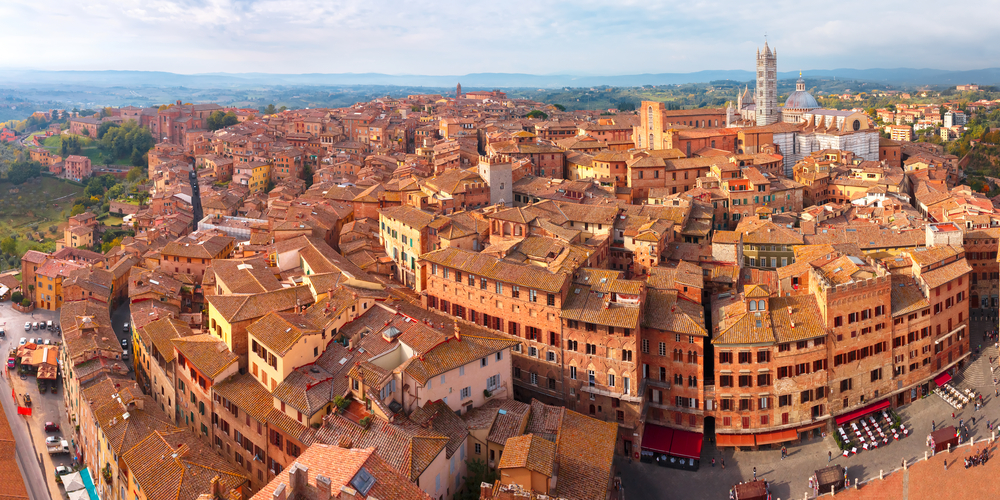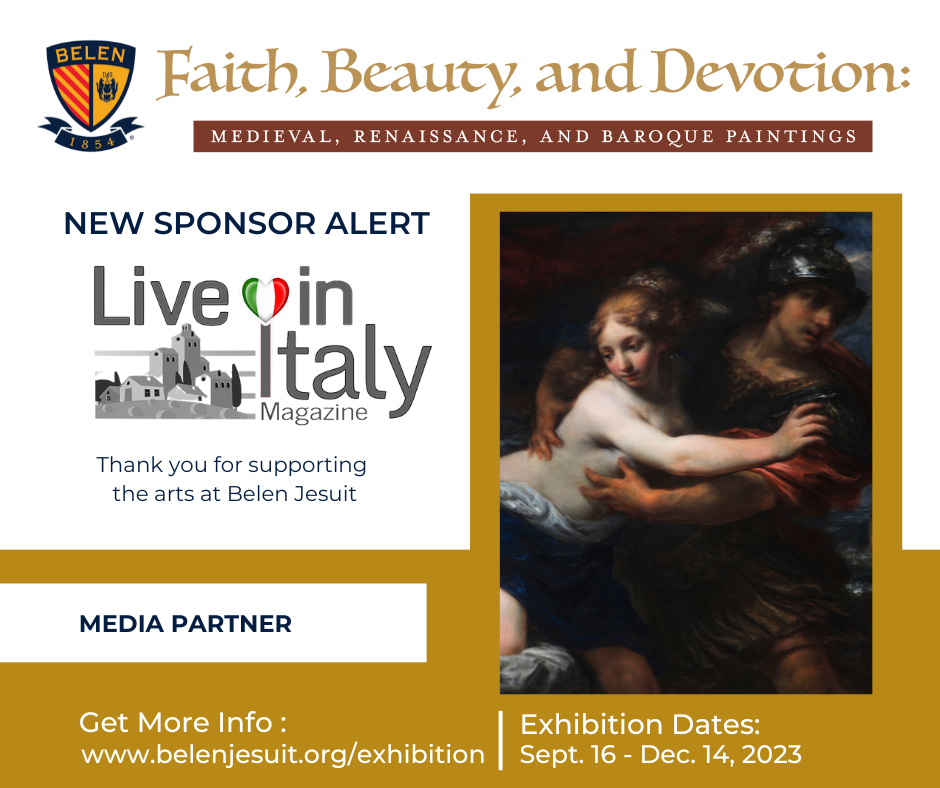Once upon a time… beautiful Siena, in Tuscany, was a very important city.
Let’s go back in time… Imagine being in 1300. Siena was rich, powerful, and heavily populated. It was also constantly battling against Firenze (Florence), in competition with the neighboring city for almost anything you can think of. In order to show the world its power, Siena decided to build a NEW CATHEDRAL (una nuova cattedrale). The main cathedral of the city, also called il Duomo, dedicated to the Madonna. The cathedral was originally built in the 12th century. There once stood a much more ancient church, situated in the oldest part of Siena. With time, it became clear that this building was too small for the ever-growing population.
Bigger than the Florence Duomo?
According to the plan of the city’s government, the new Duomo would be the most beautiful cathedral ever seen. More importantly, it would be bigger than the Duomo of Florence! The Gothic cathedral we admire today is the result of the work of great artists like Nicola and Giovanni Pisano, and the majestic building should have been just the shorter arm of the new cathedral, the TRANSEPT (il transetto). And so, work began… but things didn’t go according to plan.
Dark Times

In 1348, the plague hit Siena, and the population was reduced by half. It was a dark and terrible time for the city, which lost not only half of its population but also most of its resources. The work had to be stopped, and the initial grand project was never resumed. The large and tall construction that now stands along one side of Piazza Jacopo della Quercia is all that remains of this ambitious project. This should have been the main entrance to the Siena Cathedral and is still today called by the Senesi (the people from Siena), il FACCIATONE (the big facade). It is a constant reminder of the fragility of human ambition.
“Men make plans and God laughs” (Gli uomini fanno piani e Dio ride).
As a consequence, the city was forced to abandon the project but decided to carry on with work on the old Duomo (this too took quite a lot of time), and this is what we see today.
Curiosities
La peste a Siena: Plague in Siena
Imagine a rich and thriving city. This was Siena until the spring of 1348 when the pandemic arrived. A difficult moment is told by a well-known Sienese architect of the time, the creator of one of the oldest gates in the city, one of the main entrances, in the South of the town: The Roman gate (PORTA ROMANA). From the words of Agnolo di Tura, also called Il Grasso (the fat one), we know that the plague started in April, “that everything changed and the world became unrecognizable”.
Morte Nera
The plague, also called “morte nera” (black death), actually started in Europe one year earlier. Some cities organized themselves as best they could to curb the contagion; limited travel, access to the city closed to foreigners, businesses prohibited together with strict hygiene rules. In Siena, life came to a halt. The city government acted too late to contain the spread of the disease. Even church bells, whose sound is used to say goodbye to loved ones, remained silent. The elevated number of deaths brought the city to a standstill, and so did the whole city.
La Quarantena
Did you know that it was at that time that quarantine periods were introduced? (Ring any bell?) The principle followed the teachings of Hippocrates (400 BC), claiming that the fortieth day is the last day for spreading a contagious disease such as the plague. Anything that happens after the 40th day is not plague. This is where la QUARANTENA (quarantine) takes its name from, and this makes us think how history repeats itself and how much we learn from the past.

Practice Italian Vocabulary List from Chiara’s Tuscany
- a new cathedral | una nuova cattedrale
- transept | il transetto
- the big facade | il Facciatone
- people from Siena | Senesi
- “Men make plans and God laughs.” | Gli uomini fanno piani e Dio ride.
- the plague in Sienna | la peste a Siena
- Roman Gate | Porta Romana
- Black Death | “morta nera”
- quarantine | la quarantena
- the fat one | Il Grasso



